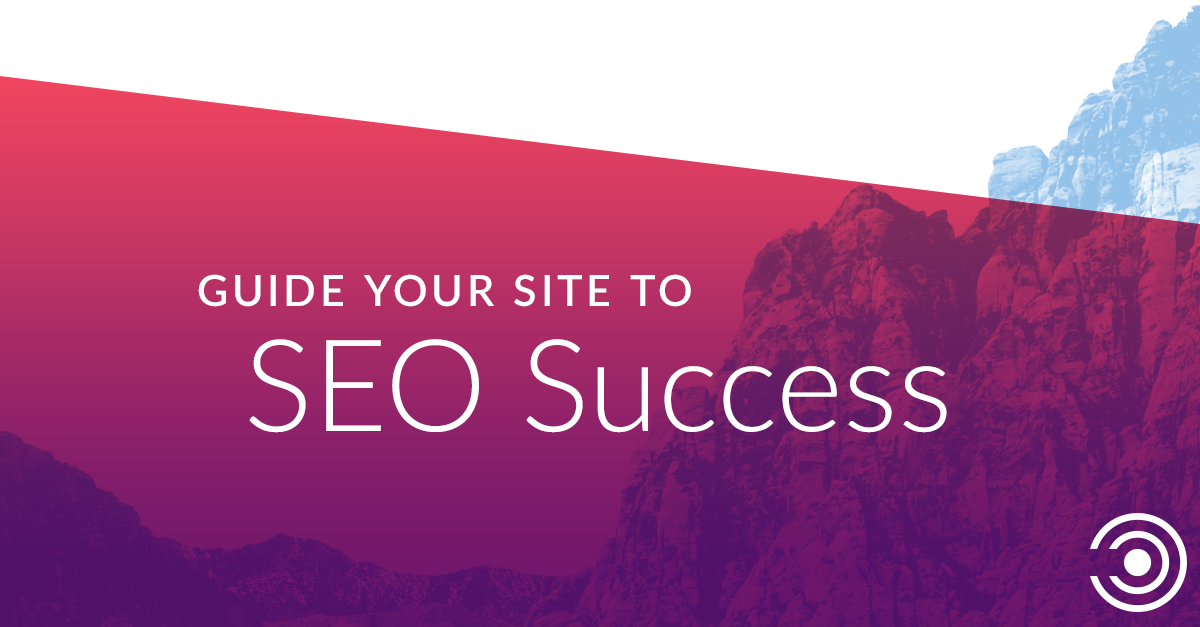UX vs. SEO (is Not the Battle You Should be Fighting)

Traditionally, it’s been UX vs. SEO. But should you be aligning the two disciplines in your strategy? We cover reasons why good SEO is good UX here.
One of the classic confrontational scenarios in the digital arena is SEO vs. UX. Old-school thinking often frames the two disciplines as diametrically opposed.
While that view has softened in the mainstream digital community, skirmishes continue to happen frequently when UX and SEO practitioners cross paths, fueled by misunderstanding and the need to fight for the goals they’re being paid to achieve.
The fact is that UX and SEO are far more aligned than opposed. Those who disagree are likely doing it wrong.
Here’s a litany of ways that good SEO is good UX, and vice versa.
Framing the Argument
Let’s address semantics first.
UX, or user-experience, is, “the quality of experience a person has when interacting with a specific design,” according to the Interaction Design Foundation. For the purposes of this article, when I refer to UX, I refer to the art and science of improving the overall user experience of a website.
At Adept, we define SEO as “the art and science of maximizing the value of organic search engine traffic.”
Since the end-goal of SEO is increasing value, improving rankings and even traffic is not enough. It is essential to target the right people with the right content and make sure that SEO traffic converts.
Good SEO is User-focused
It’s hard to have a good conversion rate if you don’t provide a good user-experience. Thus, to achieve positive SEO KPIs, you are forced to care about good UX, especially for the users coming in from search engines, the pages they land on, and the other pages they use.
In 2010, SEO was about optimizing for search engines – today, SEO is more about figuring out what your target audience is searching for and providing it to them (and beyond that, you’ll want to make sure the search engines understand you’ve done this).
That’s another reason to define SEO by its objective: the processes required to best achieve the objective have evolved rapidly. If you compared the average day’s activities of a savvy SEO practitioner in 2016 to 2010, you would find more has changed than has remained the same.
Evolution of an Algorithm
Even if you focus on optimizing solely for search engines, you can’t do so today without accidently optimizing UX. The drastic changes in Google’s ranking algorithm since 2010 largely share one theme: user-experience quality.
The Panda Algorithm (and its subsequent updates), announced on the Google blog on February 24, 2011 in “finding more high-quality sites in search,” severely limited the benefit of non-original content and content made just for search engines, paving the way for user-focused SEO.
The Penguin update (and its sequels), announced in 2012 in “another step to reward high-quality site,” introduced penalties for violations of Google’s quality guidelines such as link schemes and keyword stuffing. More than any other update series, Penguin made it much less rewarding to game the system by optimizing solely for search engines. Today, great content truly does win more backlinks than anything else.
In 2013, Google Hummingbird marked a major step forward in Google’s understanding of semantics and users’ intent, providing further reinforcement for sites that truly provide users with the content they are looking for.
There’s been plenty more lesser known UX-focused search engine updates as well (such as the top heavy update for example).
Technical Issues
Google didn’t stop at fighting webspam and improving relevance-matching – there are specific technical UX issues that are rankings factors.
In 2015, Google rolled out its mobile-friendly update, which applied a rankings boost to pages on mobile search results that hit certain mobile-friendliness standards.
“Mobilegeddon” was not the first time Google incentivized addressing certain specific UX issues.
Google confirmed page speed was a ranking factor in 2010. There is certainly no shortage of studies demonstrating the high correlation between page load times and user-satisfaction (and conversion rates).
URL errors are another example of UX and SEO conversion. Errors such as the dreaded “Page Not Found” (404) error not only substantially dampen a user’s experience, but can also seriously hurt SEO performance. For instance, I’ve seen inside web analytics accounts that cumulatively document millions of lost organic visits associated with 404s caused by botched site migrations. Properly redirecting users from old URLs to new URLs truly should be standard UX best practice – yet SEO specialists concern themselves with errors and redirects just as often (if not more) than developers do.
Web accessibility is another area where there is a huge UX/SEO overlap. Web accessibility is about making web content machine-readable so that it can be translated for visually impaired and other disabled individuals.
The Role of Content
True SEO-friendly content is also user-friendly content. Here are four areas where content affects SEO and UX:
1. Data-driven market research
Because search engines rank pages that are most relevant to users’ queries, and qualified traffic exposed to relevant content results in conversions, SEO specialists have become pretty dang good at using quantitative data to figure out what the target audience cares about.
SEO keyword research is just a specialized form of audience research – researching the audience is a first step in any kind of marketing, as well as a first step in improving UX. Tweet this!
SEO keyword/query research reveals many insights that can be used to improve UX: topic popularity, trending topics, the role of geographic location, usage differences between mobile and desktop, consumer research patterns, FAQs, segmentation by funnel stage, etc.
2. Newb/outsider-friendliness
It is important for developers and UX experts to remember a point Rand Fishkin made in a Whiteboard Friday segment:
“The user experience doesn't just apply to the people who are already on the site or navigating internally in the site.”
SEO best practices often benefit UX by ensuring outsiders and newbs aren’t neglected and receive a good experience too. Examples include:
- Clean descriptive URLs
- Descriptive anchor text
- SEO-friendly copy
3. Copywriting
Many readers will scoff at the idea that SEO-friendly copy is user-friendly. I’ll be the first to say that keyword-stuffing SEO practitioners are likely responsible for the worst copy on the internet. But in today’s landscape, more often than not, copy will only help increase SEO traffic if it is also beneficial to UX.
In addition, good SEO-friendly copy enhances clarity and is very friendly to new and incoming users. It’s about being clear and eliminating ambiguity. It’s about speaking the user’s language and avoiding undesirable insider jargon. SEO research also can be leveraged to build a lexicon to improve copywriting.
4. Information Architecture
According to usability.gov, “information architecture (IA) focuses on organizing, structuring, and labeling content in an effective and sustainable way.” IA has enormous impact on both SEO success and user-satisfaction.
Below are some ways that UX-friendly IA is also SEO-friendly IA:
- UX and SEO experts both recognize good IA must put the users first. The most common driver of bad IA is internal-thinking, such as a web designer’s personal aesthetics or the organization's’ internal structure.
- The intersection of audience needs, organization goals, and audience segmentation should always drive content strategy and priorities.
- SEO buckets keywords/topics into related topics based on how people search. Good IA is also sensibly semantically segmented.
- For SEO, you want internal links to the best content and the most relevant content – which is what you want for UX too.
Final Words
There are far less tradeoffs between and UX and SEO than there are overlapping areas.
Chances are, if UX and SEO are fighting about something, someone is either:
- practicing poor SEO,
- practicing poor UX,
- or neglecting more important win-win scenarios
Don’t be myopic. Resources are utilized much more effectively when aligned than when opposed – fight the good fight by focusing your energy on issues that represent threats to both good UX and good SEO.

